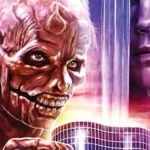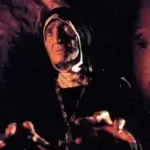The most TERRIFYING SCENES from screen adaptations of STEPHEN KING

Every fan of horror literature and cinema is familiar with who Stephen King is – the most prolific and popular horror writer in the world. An incredibly prolific man when it comes to creating chilling content, which renowned and esteemed directors such as Brian De Palma, Stanley Kubrick, David Cronenberg, and John Carpenter have reached for. While it’s hard to imagine the world of literary and cinematic horror without King’s involvement, it’s easy to notice that not all works from his pen are of high quality, let alone the film adaptations of his novels. Furthermore, many enthusiasts of both books and movies are guided by the opinion that despite King’s status, he is not necessarily the best writer in his genre, and when it comes to bringing his stories to the screen, the results are often subpar. The truth, however, is that without Stephen King, several truly significant titles in the realm of literature and film would not have seen the light of day. In the context of this list, I mean especially vivid excerpts from the writer’s works, particularly those that have gained a reputation for being the most terrifying. Here is my selection.
— SPOILERS —
Carrie

Carrie, directed by Brian De Palma, marks the debut among film interpretations of Stephen King’s books. It’s a successful start and evidence that the continued connection between literary and cinematic material based on the future king of bestselling horror prose makes perfect sense and is justified. De Palma employs Hitchcockian methods of building suspense and tension with good results, and Carrie, as a tale of intolerance and non-acceptance molded into horror and coming-of-age film with a moral, still belongs to the classic category under the “made in King” label.
The Most Terrifying Scenes:
Carrie’s Revenge at the School Prom
Teenage Carrie, ridiculed and rejected by her peers and raised by a religious fanatic, discovers her telekinetic abilities. Humiliated at the school prom (the scene of Sissy Spacek being doused in pig’s blood took the crew two weeks to shoot) she uses her gift to exact revenge for her humiliation, even on innocent bystanders. The building goes up in flames, students and teachers die in the fire, trampled by the crowd, electrocuted, or crushed by debris. This is shown on a split screen. The budget fell short for destroying half the town and a gas station.
Carrie’s Mother’s Death
Returning home, seeking comfort and refuge with her mother, Carrie finds her manic mother believing that her conception was a sin. She strikes her daughter with a kitchen knife and attempts to kill her. In self-defense, Carrie again relies on her extraordinary abilities, impaling her mother with sharp objects and tools solely with the force of her will. The woman dies in pain and ecstasy, in a crucifixion pose with a smile on her face. Afterward, Carrie ignites a fire that engulfs the house, causing it to collapse. Prior to this, a figure of Saint Sebastian appears in a position similar to Carrie’s mother after her death. Margaret White portrayed by Piper Laurie is one of the most psychopathic female characters in the history of cinema.
Sue’s Horrifying Dream
In the film’s finale, one of the prom attendees, Sue, who survived Carrie’s attack, visits her desecrated grave and lays down a bouquet of flowers. Unexpectedly, the titular character’s hand emerges from the ground and grabs the terrified girl. Sue wakes up in a hospital, realizing it was a nightmare. This scene remains an unforgettable jump scare, inspiring future horror creators.
Related:
The Shining
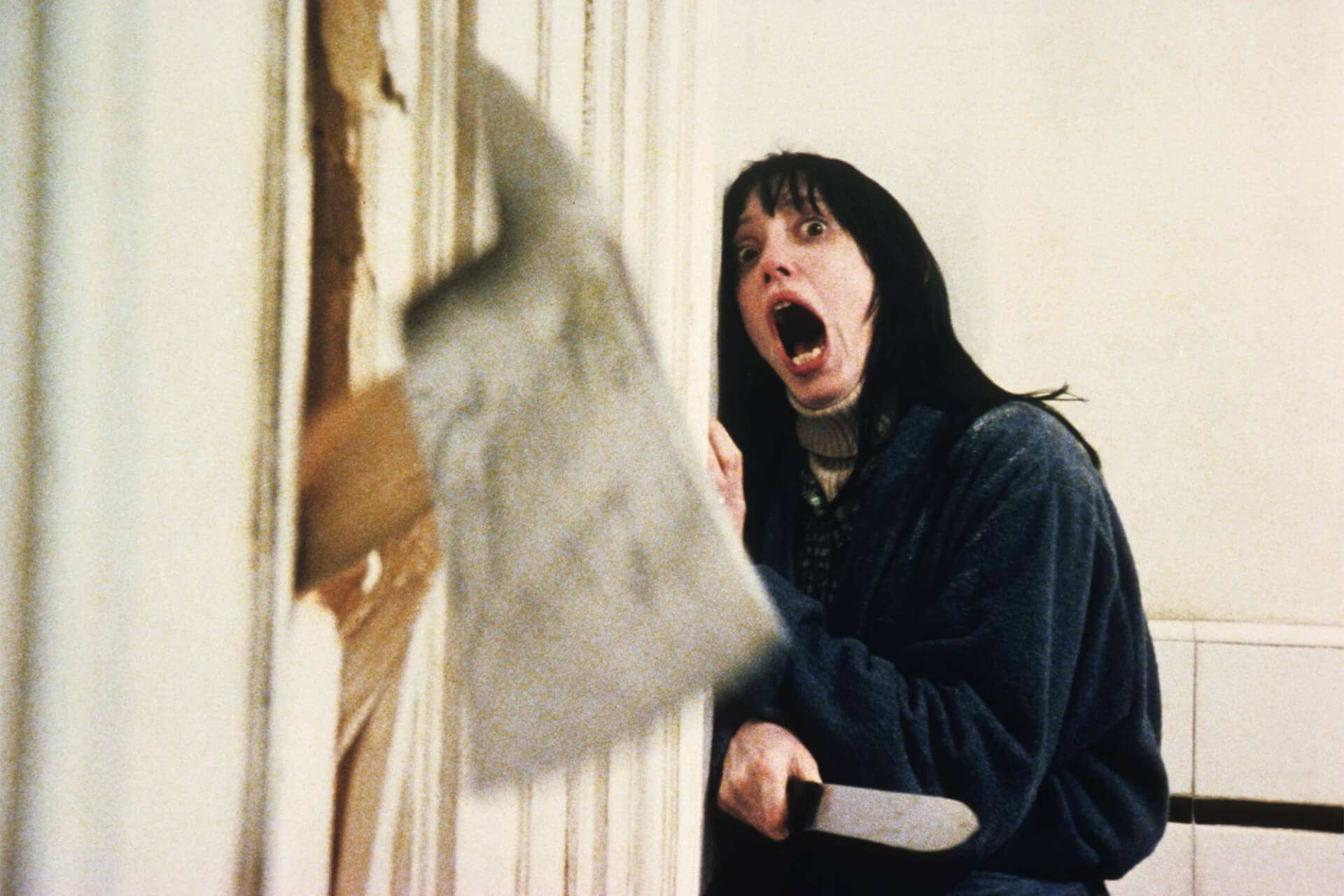
The next adaptation of Stephen King’s work divided critics and audiences. The literary masterpiece was brought to the screen by Stanley Kubrick, not entirely in line with the novel’s content, which caused dissatisfaction among the author and his fans. The British visionary made cinematic adjustments, pushing forward his artistic vision of the story of a deranged writer and the haunted Overlook Hotel. Comparisons and differences between the book and the film have been studied extensively. King’s version of The Shining defends itself with its elaborate narrative and precision in describing character profiles and plot development. Kubrick’s language is artistry, perfection, implications, multi-layering, with hidden meanings that emphasize psychological elements over paranormal phenomena. Kubrick’s The Shining, with Jack Nicholson, is a masterful horror film that built its own reputation over the years and should be considered a separate entity due to its very good, original book.
The Most Terrifying Scenes:
The Elevator Blood Torrent and the Twins
The cascade of blood pouring out of the elevator and the ghosts of the twins murdered by Jack Torrance’s predecessor in Danny’s visions symbolizes Kubrick’s eerie imagery, confirming his creative influence on the viewer’s imagination. The saturated color palette and piercing sound design enhance the overwhelming sense of horror.
Room 237
Once again, the hypnotic use of color, sound, and image as a harbinger of something terrifying. Nothing more to add or subtract. I can only attempt to refer readers to my compilation about Evil Rooms on Screen.
The First Attempt to Kill His Wife
There won’t be the infamous axe moment and the “Here’s Johnny” line. I chose a scene where Wendy checks Jack’s manuscript and discovers that he has written only one sentence on several pages throughout his stay at the hotel. The writer appears, insane and ready to kill his wife. Terrified and disoriented, Wendy backs away with a bat in hand, while Jack taunts her fear, blaming her for his failures, condemning her for her supposed lack of responsibility and value, approaching her, openly threatening her with death. Nicholson is absolutely fantastic here, his smile masking his rage and frustration. At times, he seems like a man who has long awaited an opportunity to antagonize his wife. This sequence ensures that The Shining is not just a simple horror film, but a deeper study of not only madness but also familial and creative crises.
IT
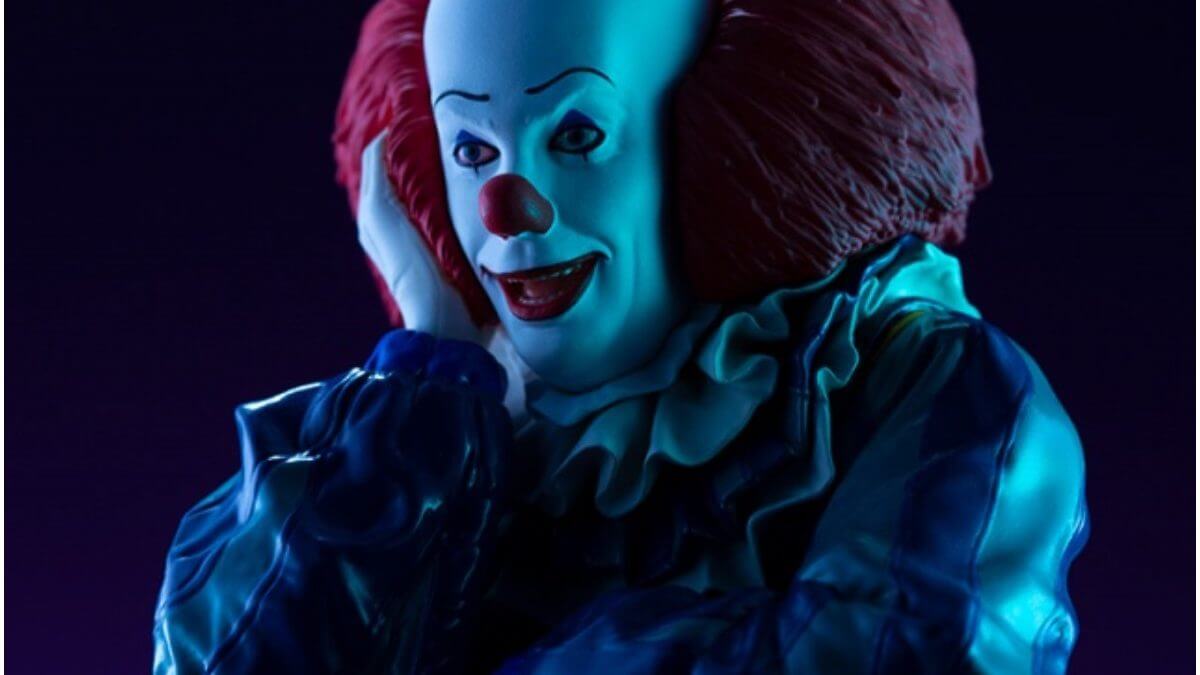
The mini-series edition brings back childhood fears for me. I remember its broadcast on TV when I was just a kid – Pennywise the Clown would give me shivers, but at the same time, he would pique my curiosity and excitement. Of course, watching it again after all these years doesn’t have the same effect, but the memories from that time will stick around for a long while. And I know I’m not alone in this opinion; many cinephiles who grew up in the ’90s share similar feelings. It took a long time to get a remake, and the new Pennywise was well received. However, I doubt that it would have the same impact on today’s growing audience as the original had on its viewers back then. Different generation, different perspective, different realities.
The Most Terrifying Scenes:
First Encounter with Pennywise
The beginning of the film, when the younger brother of the main character plays with a paper boat on the rainy street, watching it flow into a sewer drain, and encounters Pennywise, is perhaps the most recognizable scene in both versions of the It productions. The clown engages in a conversation with the boy and pretends to be a friendly joker, promising to give the boat back. The audience, of course, foresees that it won’t end well for the kid. The convinced boy, trying to retrieve his toy, reaches into the drain, where Pennywise appears. The clown reveals his face, exposing inhuman teeth. In the old version, the scene cuts off when the clown reveals his inhuman nature, and we learn about the details of the boy’s death from a description and during the funeral. The new It model offers almost the entire scene. The clown bites off the boy’s arm, and the boy tries to escape, crawling to the other side of the street. The extended arm of the clown reaches him and pulls him into the sewer.
Blood from the Sink
Pennywise lurks in the sewer pipes, waiting for teenage Beverly Marsh to use the bathroom. At one point, voices and sounds come from the sink’s drain. A balloon emerges through the trap, bursting and splattering blood on the girl and the walls. Pennywise’s voice haunts and terrifies Beverly. The new version once again offers a more elaborate and visually impactful take on this sequence. Blood spews from the drain like a geyser, and to make things worse, the clown attempts to pull the terrified teenager inside using her own hair, which was caught in the sanitary installation.
Misery
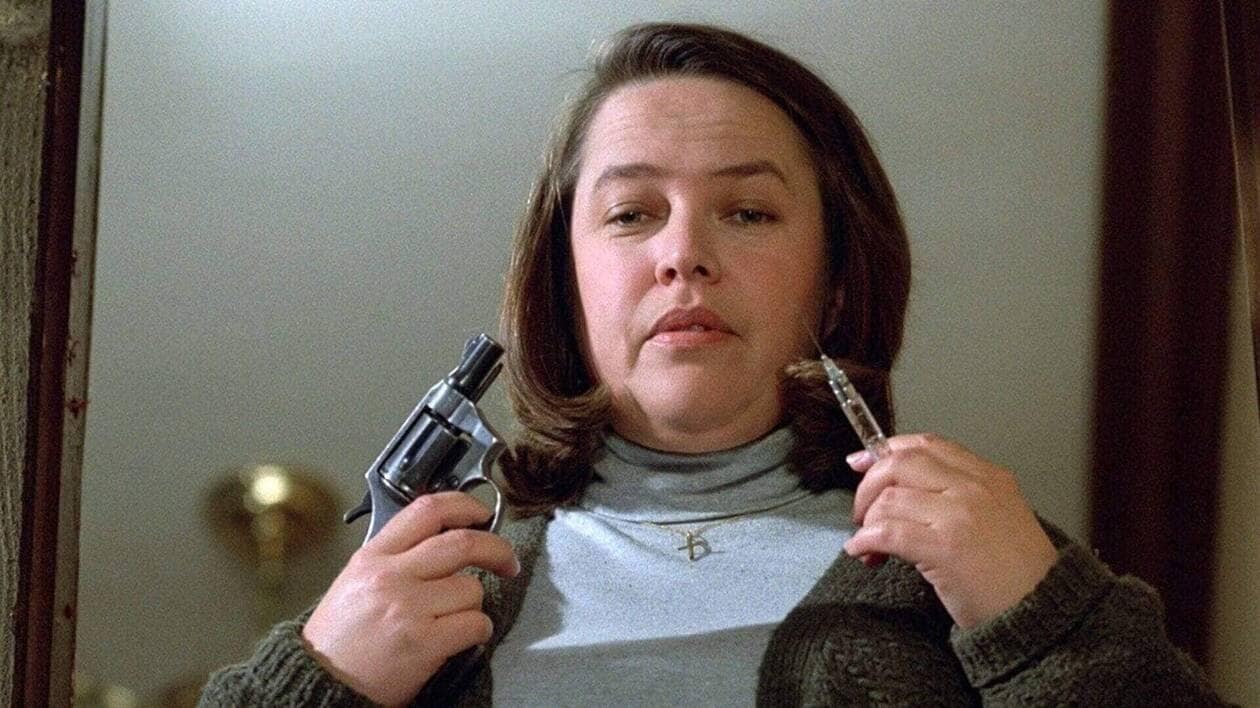
Misery, nearly a decade after The Shining, is an adaptation of King’s book that truly stands out, as evidenced by Kathy Bates’ Oscar-winning lead role. Indeed, the actress excelled as Annie Wilkes, an unhinged fan of a famous writer who, after a car accident, becomes reliant on her help and favor. The film version of Misery wins over with its simplicity and somewhat intimate structure, which aids in maintaining intense tension in the relationship and interaction between Bates and Caan. Rob Reiner’s film departs from the often characteristic fairytale-like quality found in other King adaptations, opting for realism and the plausibility of events.
The Most Terrifying Scenes:
Paul Discovers the Truth about Annie
Growing increasingly concerned about Annie’s state and his own safety, Paul searches through press materials and clippings in Annie’s absence, revealing that she worked as a nurse in a hospital and was responsible for the deaths of infants, despite never being convicted.
Paul’s Leg Breaking
Effectively a continuation of the previous scene, armed with a kitchen knife, Paul has no absolute doubts that he shares a roof with a dangerous psychopath. He becomes even more convinced when in the middle of the night during a storm, Annie suddenly appears over his bed and injects a sedative into him. The morning turns out to be worse and unfavorable for the captive writer. Sheldon wakes up strapped to the bed and partially numb. Annie realized that Paul was lying and trying to escape. She found a hidden knife in the mattress and decided to restrain the writer using a radical method. First, she explains what hobbling is, and then she breaks both of the writer’s ankles with hammer blows. Kathy Bates regretted an unrealized scene where Annie was supposed to kill a man by running him over with a lawnmower. I believe it wasn’t necessary. The fragment with the hammer was enough to convince the audience that they were witnessing one of the most powerful moments in thriller history, not to mention films based on Stephen King’s books.
The Shawshank Redemption
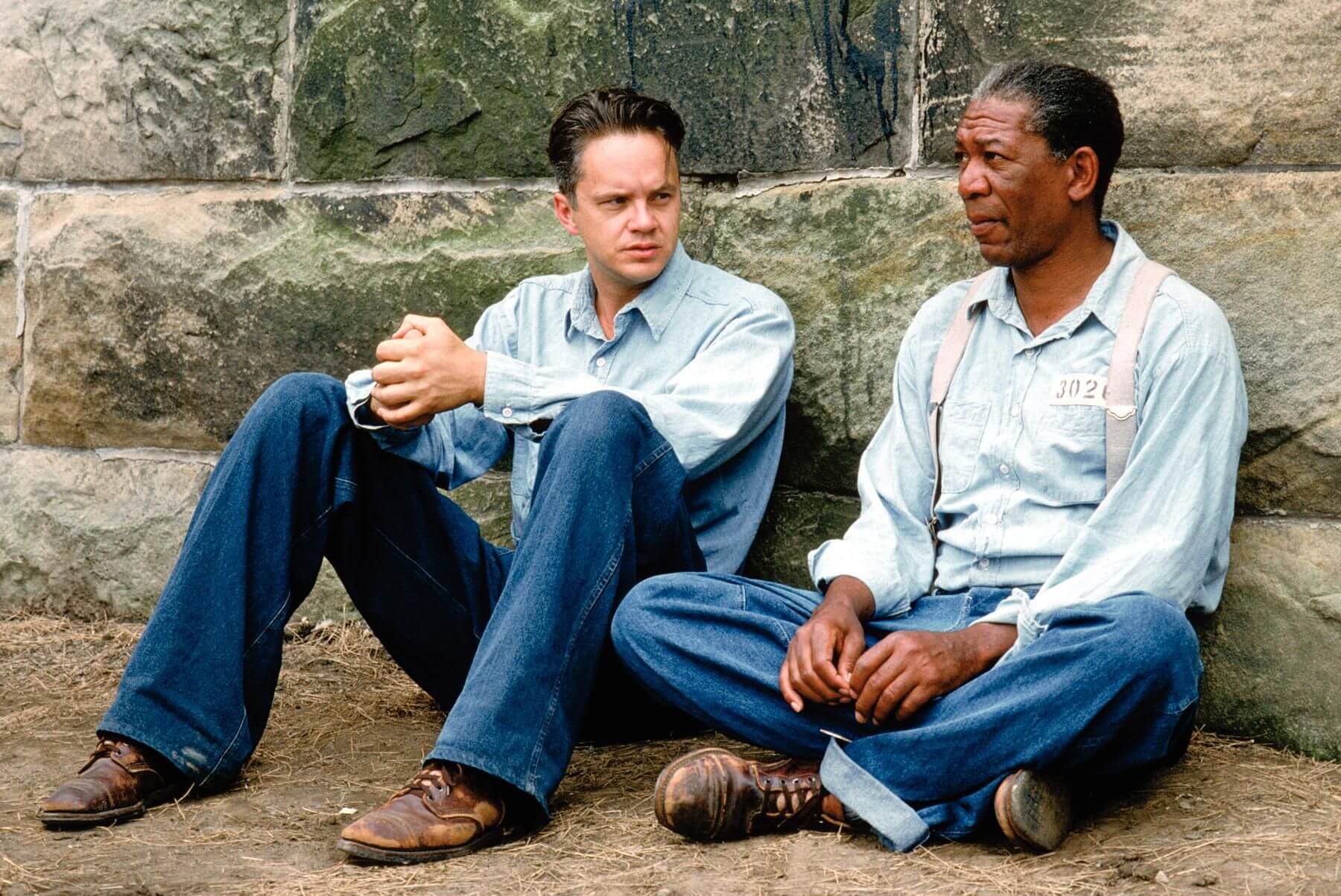
The Shawshank Redemption remains one of the best film adaptations based on King’s novels. It’s also one of the few films on the list of adaptations that isn’t a horror film and lacks paranormal elements. It’s a prison drama about adapting to new, unfavorable conditions, the spirit of freedom, resilience, justice, the power of hope, and friendship. Despite the praises for Frank Darabont’s film, there have been voices claiming that the prison realities depicted on screen are too tame and lacking in credibility. Partly, that might be true. So, why is this title included in this compilation if it’s not a horror film and the prison world seems somewhat sanitized? It’s worth mentioning two scenes that are brutal enough to warrant their inclusion and not be considered accidental or filler. At least in my eyes.
The Most Terrifying Scenes:
The New Prisoner Beaten by Captain Byron
Prison is not a kindergarten. Tough rules apply there. Those who don’t follow them must expect consequences. Unfortunately, this doesn’t always go hand in hand with acting according to the letter of the law and decency. It’s more like the law of the jungle. Andy arrives at Shawshank as a prisoner convicted of killing his wife and her lover. He’s innocent, so adapting will be harder for him. At least initially. The corrupt warden and the head of the guards, Captain Byron, hold power in the prison. Don’t expect empathy, understanding, or leniency from him. He’s a bureaucrat, a terror among the inmates, and if you cross him, you’ll regret it. Not every new prisoner can handle their situation mentally. One of them, a frightened chubby man, has a panic attack. He forgets about the rules of nighttime silence and the warning about the consequences of breaking the rules. There won’t be a second chance. Byron drags the unfortunate man out of his cell and beats him to death with a baton. According to experienced inmates, the victim brought it on himself. This doesn’t change the fact that he should elicit sympathy, and Byron deserves judgment.
Regular Assaults on Andy by a Group of Homosexual Prisoners
I mentioned that the beginning for Andy in finding his place in a new, completely unfamiliar reality won’t be easy. The former banker becomes an object of desire for a group of gay inmates, specifically a gang of homosexual prisoners. They attack him while he’s working in the laundry and sexually assault him with violence. They repeat this cyclically. Andy tries in vain to defend himself against them. Manipulation attempts, compromise, or threats of castration by biting during oral rape don’t help. This works even more enticingly on the gang’s leader. The more you resist and defend yourself, the more it excites me. However, karma will catch up, aided by Dufresne’s intelligence and cunning.
The Green Mile

Once again, a prison setting, and once again, Frank Darabont behind the camera. The Green Mile repeated the success of The Shawshank Redemption as an effective tearjerker (Tom Hanks cried with emotion while reading the book and the script). This time, supernatural forces become an integral part of the story. A black prisoner with miraculous abilities is sentenced to the death row for the alleged sexual assault and murder of two young girls. When he reveals his abilities, the guards begin to doubt the justice of his sentence. The Green Mile can move the audience not only with the touching episodes involving John Coffey. The film contains two scenes with a horror atmosphere. High-quality horror, that is.
The Most Terrifying Scenes:
Eduard’s Execution
Percy is a true scoundrel. He becomes a guard due to connections. He dreams of conducting an execution, and unfortunately, he gets that chance. Eduard Delacroix, the owner of Mr. Jingles, a mouse brought to life by John Coffey, is to be executed. Mr. Jingles was previously stomped on by Wetmore. Delacroix offends Percy when he mocks him during a humiliating confrontation with Wild Bill. Wetmore, who enjoys tormenting the weaker and defenseless, wets himself in fear of Bill in front of the guards and the other inmates. Humiliated Percy seeks revenge and deliberately neglects the proper procedure for preparing Delacroix for execution in the electric chair. He skips wetting the sponge, which is necessary for a proper execution. As a result of this omission, Delacroix dies in agony. The electricity doesn’t reach his head, and his body burns alive.
John Transmits a Vision to Paul, Revealing the True Murderer of the Girls
Halfway through the film, the audience is convinced that John Coffey couldn’t have committed the murder of the two girls. Could a man with superhuman abilities to perform selfless acts of kindness really do something like that? Or is it a filmmaker’s misdirection, and a surprising twist awaits us? Yes, a twist awaits, but it concerns someone else—the real perpetrator. Coffey shares his vision with Paul, the head guard who believes in the innocence of the black prisoner. The vision not only solidifies Paul’s belief but also points to Wild Bill as the actual perpetrator of the rape and murder of the two girls. Bill worked and lived with the victims’ parents, while Coffey discovered the dead bodies.
The Mist
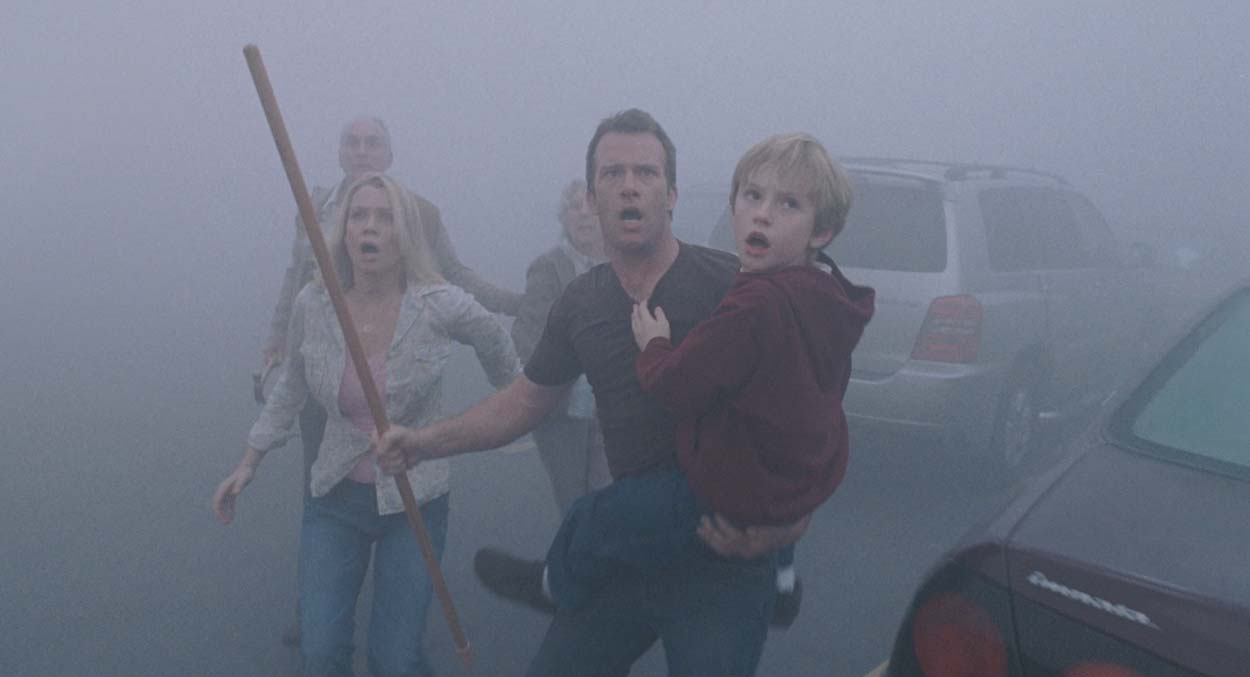
Frank Darabont once again turns to King’s novel to bring it to the screen, this time leaving behind prison walls and creating a more traditional horror that might be reminiscent of John Carpenter’s The Fog. The similarities are quite justified, considering that Darabont wanted to adapt the story as early as 1980, around the time Carpenter’s Halloween and The Thing were released. Instead of vengeful spirits of drowned sailors seeking revenge on the town’s inhabitants within the mist, King and Darabont’s work is enveloped in a visible aerosol of creatures attacking people.
The Most Terrifying Scene:
David’s Desperation
The King’s novel ends differently than the film. The book presents an open-ended conclusion, while the movie version leaves no illusions—it doesn’t have a happy ending for the main character. This is where Darabont’s version of The Mist gains its greatest strength. David loses hope of surviving himself, along with his son and companions. The approaching mist heralds death at the hands of the creatures. There is no chance for help. Humanity won’t make it. The adults decide to take matters into their own hands, deciding their fate. In an act of desperation, David shoots his own son and the other survivors in the car. He intends to commit suicide but runs out of bullets. He steps out of the vehicle and waits for the mist to engulf him. Out of the mist emerges a military unit, a battalion conducting rescue and combat operations against the monsters. David has killed his son and three others in vain. If he had waited a few more minutes, they all would have been alive and safe. David collapses in despair.




